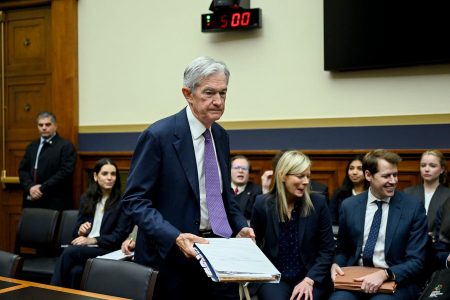PIMCO, a prominent investment management firm, recently announced dividend cuts for two of its closed-end funds (CEFs), triggering significant price drops and sparking concern among investors. While the resulting yields remain relatively high, the double-digit losses experienced by shareholders underscore the risks of chasing yield without a thorough understanding of the underlying fund dynamics. This incident serves as a cautionary tale against relying solely on hopeful expectations and emphasizes the importance of diligent research, particularly when investing in CEFs. The case of PIMCO Strategic Income Fund (RCS) exemplifies the perils of overvalued funds.
RCS, despite its association with a reputable firm like PIMCO and its continued high yield even after the dividend cut, has historically traded at a substantial premium to its net asset value (NAV). This premium, exceeding 40% at the time of writing, signifies that investors are essentially paying $1.43 for every dollar of underlying assets. Such inflated valuations create vulnerabilities, as any perceived weakness in the fund’s performance can lead to a rapid price correction. The recent dividend cut, while not necessarily indicating fundamental problems with the fund itself, acted as a catalyst for this correction, demonstrating the precarious nature of investing in overvalued assets. The persistent premium, even after the price drop and dividend cut, suggests that some investors may still be overestimating the fund’s true worth.
The situation with RCS contrasts sharply with other PIMCO CEFs, such as PIMCO Dynamic Income Fund (PDI) and PIMCO Dynamic Income Opportunities Fund (PDO), which, while also managed by PIMCO, have demonstrated stronger performance and trade at more reasonable valuations. These funds, with their focus on high-yield credit and more moderate allocations to mortgage-backed securities (MBS), offer a potentially more attractive risk-reward profile. Their historical performance, particularly PDI’s impressive 11% annualized return since inception, underscores the importance of considering not only yield but also total return potential when evaluating investment options. Furthermore, their more modest premiums relative to NAV reduce the risk of sharp price corrections driven by shifts in investor sentiment.
The author’s preference for PDI and PDO stems from several factors, including their superior historical performance, more balanced portfolio allocations, and more reasonable valuations. While RCS has a heavy allocation to MBS, which can underperform in a rising interest rate environment, PDI and PDO have a greater focus on high-yield credit, a sector that tends to perform well in a strong economy. This strategic allocation difference contributes to the contrasting performance of these funds. Moreover, the author’s apprehension surrounding RCS is heightened by its persistent premium, highlighting the inherent risk of overvaluation, regardless of the underlying fund manager’s reputation.
The dividend cuts implemented by PIMCO, while undoubtedly impacting investor returns in the short term, offer a valuable lesson in the importance of a comprehensive investment approach. Focusing solely on yield, especially in the context of CEFs, can lead to overlooking critical factors such as valuation, portfolio composition, and overall market conditions. The significant price drops experienced by RCS shareholders demonstrate the potential for substantial losses when investing in funds trading at substantial premiums. This incident emphasizes the need for investors to delve beyond headline yields and conduct thorough due diligence, including evaluating the fund’s underlying assets, management strategy, and historical performance.
The comparison between RCS, PDI, and PDO highlights how different funds managed by the same firm can exhibit vastly different risk-return profiles. While all three funds benefit from PIMCO’s expertise in fixed income management, their individual investment strategies and resulting valuations play a crucial role in determining their suitability for different investor needs. The author’s focus on PDI and PDO, with their emphasis on high-yield credit and more reasonable valuations, reflects a preference for a balanced approach that considers both income generation and capital preservation. This approach aligns with a long-term investment strategy that prioritizes sustainable returns over chasing high yields that may come with hidden risks.
Finally, the author’s analysis underscores the importance of understanding the relationship between a fund’s NAV, its market price, and the potential impact of dividend cuts. A high premium to NAV, as seen with RCS, creates a vulnerability to price declines if the fund’s performance falters or if investor sentiment shifts. Conversely, a fund trading at a discount to NAV, as PDI and PDO have in the past, can offer a margin of safety and the potential for price appreciation if the fund’s performance improves. Furthermore, the stability of a fund’s NAV can provide insight into its underlying financial health and the sustainability of its dividend distributions. Monitoring these factors can help investors make informed decisions and avoid the pitfalls of chasing yield without considering the broader investment landscape.










